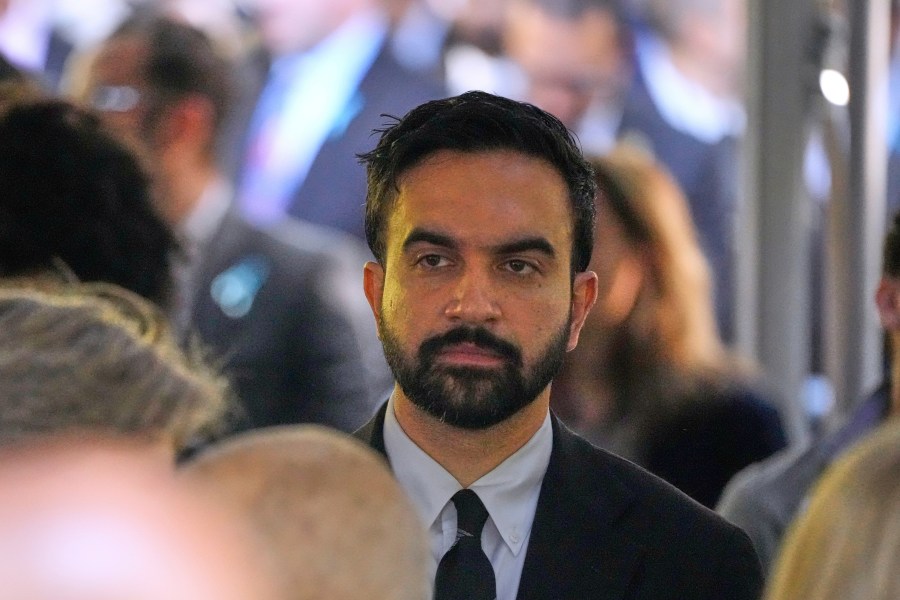Zohran Mamdani appears to have a plan for leveling the playing fields in education. Faced with a huge number of students with comparably dismal scores in math, English, and science, Mamdani is going to bulldoze higher-achieving programs. It is a pledge that only Soviet central planner would relish.
By eliminating gifted and talented program in lower grades, Mamdani will increase equity through mediocrity. With some on the left demanding the closure of all such programs, the concern is that New York is following the trend in other blue cities. (His opponent, former Governor Andrew Cuomo, has said that he would actually expand these programs).
Even the Washington Post’s editors have objected to his plan as “damaging education in the name of equity.”
Although Mamdani is currently focusing on lower grades, these programs are under fire as racist or privileged since less than a quarter of students come from Black or Latino populations. Activists have long objected that roughly 70 percent of students in gifted classrooms were white or Asian American, even though these groups comprise only about 35 percent of the student body.
The result is that politicians like Mamdani are virtually pushing high-achieving families and students out of public education. Once they are gone, the glaring contrasts in proficiency among programs will also be gone.
Gifted and talented programs are a source of pride for many families as students work with advanced technology and theories. Mamdani himself attended one such high school, Bronx High School of Science in Kingsbridge Heights. Students must work extraordinarily hard to gain admission to these programs. But what is merit to some is privilege or racism to others.
These students also can present a glaring and unwelcome contrast with the rest of the school system, particularly among different racial or economic groups. New York spends more than any other city on education at $41 billion a year — $36,293 per pupil. Much of this money is devoured by a bloated educational bureaucracy, which has been failing our children for decades. More than 40 percent of grammar school students in the city failed the state’s standardized math and reading tests last year. There were some gains recently, but these may just be a result of schools lowering the bar for passing the tests.
Across the country, some districts are lowering proficiency requirements and eliminating standardized tests to create an artificial appearance of success. These schools spend massively while cranking out kids with little hope to compete in the new economy or escape a cycle of poverty. This new ideal of “grading for equity” is designed to manipulate test standards to create the appearance of success.
Other districts are dumping standardized tests in favor of plans to prioritize “educational enjoyment” over performance measurements.
Some schools have entirely eliminated proficiency standards to erase any objective measurements of success.
Within these under-achieving systems, high-achieving students are not always welcomed. It is obvious that, faced with the elimination of gifted and talented programs, many of these families will simply leave public education if they can find the means to do so.
Many school districts are already experiencing a drain of families who are turning to religious or private schools with a greater emphasis on basic educational skills and subjects. They are tired of districts paying millions for transcendental meditation programs or other woke programs as proficiency levels stagnate or fail.
The response of many politicians has been to fight school voucher programs and other alternatives to their failing public schools. While Mamdani wants to introduce socialist programs like state-run stores as an alternative to private businesses, he is less keen in offering alternatives to government programs like public schools. School officials and unions oppose school choice because they know that many families would just leave public schools in search of better educational opportunities — few, if given a true choice, would buy the public schools’ subpar product. Many are already leaving.
Mamdani now threatens to turn that stream into a tsunami. Rather than fight to keep the most motivated and successful students in the public school system, he is effectively going to chop off the top ten percent. He is following in the footsteps of a disastrous plan under former Mayor Bill de Blasio that later had to be rescinded.
If expanded from these lower grades, Mamdani’s plan would eliminate the prospect of students being able to work at the highest possible levels in the New York school system. New York offers all students the opportunity to undertake advanced work if they work hard enough to gain admission. That includes non-white students who can find opportunities for elite colleges and jobs through such programs. The early grades are a critical period for such students who show extraordinary talents to develop those skills.
For teachers, the result can be equally dysfunctional. They will now be faced with students who require a far more intense level of instruction to progress. With a few gifted and talented students in a class, it is more likely that they will teach to the majority and leave the advanced students stagnating.
That can be devastating for advanced students. The gifted and talented programs allow students to achieve their full intellectual potential. If these students are not challenged, they can become disgruntled and unmotivated, potentially tossing away promising careers.
The dumbing down of our public schools is already manifesting itself in higher education. Recently, Harvard had to offer courses on basic high-school math for its students, who were found unable to do college-level work.
For many, the solution is not to eliminate programs for advanced students, but to elevate the rest of the school system to proficiency levels. Of course, that is easier said than done, and a far more challenging prospect for public educators who have been failing inner-city kids for decades.
As for Mamdani, there seems a certain visceral appeal to pushing everyone toward the lowest common denominator. Mamdani is in his element in railing against the privileges of the children of largely white and Asian families. He can now do for education what the Soviets did for fashion: reducing choices to a few bland options.
Journalist H.L. Mencken once denounced public education as an effort “simply to reduce as many individuals as possible to the same safe level … to put down dissent and originality.” Mamdani seems intent on realizing Mencken’s worst fears.
Jonathan Turley is the Shapiro Professor of Public Interest Law at George Washington University. He is the author of the bestselling book “The Indispensable Right: Free Speech in an Age of Rage.”














